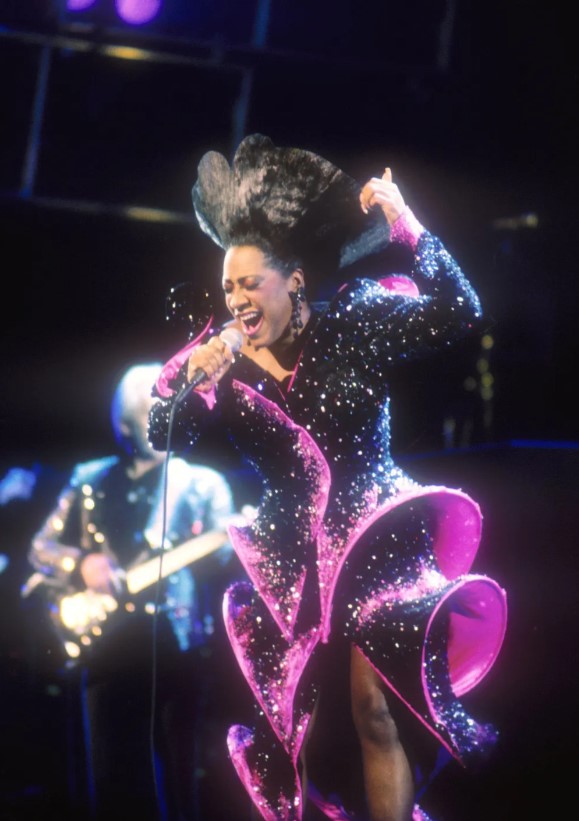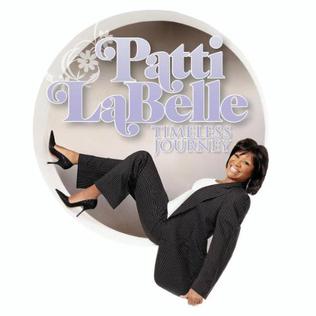From the First Bank Pops Series:
Patti LaBelle with the Nashville Symphony
Patti LaBelle has enjoyed one of the longest careers in contemporary music, singing everything from girl group pop and gutsy soul to space-age funk and hard-hitting disco. This past weekend, the “Godmother of Soul” was accompanied by the Nashville Symphony under the baton of Enrico Lopez-Yañez for three performances. These concerts were the fourth offering of the First Bank Pops Series this artistic season.
Still decorated from the Nashville Symphony’s celebration of the Lunar New Year earlier in the week, both Laura Turner Concert Hall and the lobby of the Schermerhorn Symphony Center were electric with excitement from seasoned patrons and newcomers alike. The Nashville Symphony was featured on the first half of the concert before intermission, after which Patti LaBelle took to the stage. An extended seating schematic was setup for the musicians with a block of strings placed stage right, a block of woodwinds located centrally, and a row of brass seated behind an encampment of percussion stage left. LaBelle’s own backing musicians were seated between the conductor’s podium and the woodwind block, leaving just enough real estate for LaBelle to travel the length of the apron of the stage.

Bolting to the podium after acknowledging concertmaster Peter Otto, Maestro Lopez-Yañez led the Nashville Symphony in an opening selection that was reminiscent of old Hollywood. Serving as Principal Pops Conductor of the Nashville Symphony, Enrico Lopez-Yañez operates in the same capacity with the Pacific Symphony, as well as being the Principal Conductor of the Dallas Symphony Presents. Lopez-Yañez is quickly establishing himself as one of the Nation’s leading conductors of popular music, becoming known for both his unique style of audience engagement and as an active composer/arranger.
Wearing a navy velvet jacket, Lopez-Yañez introduced Patti LaBelle’s career highlights between thoughtfully curated selections that both prepared and enhanced LaBelle’s portion of the program. Selections from George Gershwin’s English-language opera Porgy and Bess was presented alongside selections from the movie-musical Tommy celebrating the music of The Who, and, perhaps more importantly this evening, acknowledging LaBelle’s guest role as The Acid Queen on Broadway in 1989. The first of two renditions of the iconic “Somewhere Over the Rainbow” followed, with the first half of the evening ending with Matt Catingub’s arrangement of Tropical Smoothie, a smooth jazz setting that featured soloists from the orchestra.
The Nashville Symphony played beautifully during the first half of the program – more playing than they would do during the second half of the performance. While I wouldn’t expect any of the excerpts executed to be found in a book of orchestral excerpts or assigned to developing players studying at leading conservatories, except the infamous mallet-crossing xylophone excerpt from Porgy and Bess, many key members of the orchestra were featured. Using the Nashville Symphony’s season as a guide, perhaps more attention should be paid to pops-styled performances when developing future generations of musicians. Changing lights, amplification, and reduced rehearsal sequences can all prove challenging. Not every weekend of artistic seasons features those works cemented as perennial favorites from the orchestral canon.
Ms. Patti LaBelle welcomed her own group of musicians to the stage for her set. Background vocals were provided by Debbie Henry Ramsey, Brenda Roy, Aja Grant, and Aaron Marcellus Sanders. Throughout the performance, each background vocalist was given at least one opportunity to be featured, sometimes to facilitate breaks for LaBelle and other times in tandem with the headliner.
Stanton Lewis served as musical director and pianist, leading cadential moments and ensuring accurate pacing was always achieved. Other musicians featured with Ms. LaBelle were Danny “Jazz” Nixon and Keith Phelps, Jr. on keyboards, Eric Seats on drums, Alex Evans on bass, Andre Frappier on guitars, and three horn players: Andre Bradshaw, trombone; Aaron Janik, trumpet; and Hiruy Tirfe, saxophone. Most selections were performed with just these added musicians, while other selections also involved the Nashville Symphony.
Patti LaBelle’s first vocals of the evening came from off stage, igniting all in attendance. Dressed in crimson red, LaBelle’s presence engulfed the space and proved that she is seventy-nine years strong. “If You Asked Me To” gave LaBelle the opportunity to address hardship, particularly that being felt by her friend Celine Dion who also released the song – although LaBelle was quick to acknowledge she crushed this song first in 1989. The power of LaBelle’s vocals became even more intimate with her 2004 release “2 Steps Away” from the album Timeless Journey. The emotion felt from this couplet was palpable and left the audience meditative and contemplative with one’s personal struggles and those occurring on a global scale.
Next, Patti LaBelle threw musical director Stanton Lewis a curve ball and changed the setlist in real time to include a rendition of “Tennessee Whiskey” by David Allan Coe and for which Chris Stapleton has enjoyed much recent success. What else is one supposed to do when performing a mere block from the historic Honky-Tonks of Lower Broadway? LaBelle left the stage for her first of two costume changes, retuning with an equally captivating chartreuse ensemble. Like before, LaBelle was quick to kick off her stiletto heels, momentarily walking barefoot on stage, before putting on a more sensible pair of flats. Also flying during her set were microphone stands and a dozen long-stem roses that were periodically thrown to adoring audience members.
One of the most energetic moments of the evening was the singing of a spiritual, audience and LaBelle both, complete with a full shout chorus. Reverend Patti LaBelle was holding service and teaching the gospel of soul through song. Pure magic.
The concert ended with the second rendition of “Somewhere Over the Rainbow” from the 1939 film, The Wizard of Oz. Harold Arlen’s ballad and Yip Harburg’s lyrics brought everyone together, remind us of our connectedness and the importance of being kind. An extended outro foreshadowed the return of Patti LaBelle and a second costume change – this time to a black, sequined flapper dress and bobbed wig.
Six members of the audience were invited to the stage while an attentive bodyguard remained close. These six guests were asked to sing the chorus of “Lady Marmalade” and then dance. This was done to varying degrees of success, as one might imagine. This sequence of events created some confusion between musical director Lewis and conductor Lopez-Yañez, at times requiring Lopez-Yañez to cut off the orchestra, only to reenter at the next significant structural music happening. Had one not been watching the podium or aware of the dynamics of leading such a performance, these challenges would likely not be noticed. “Lady Marmalade” was combined with Donna Summer’s hit “Bad Girls” from 1979 to conclude a very memorable evening of music with a legend.
The Schermerhorn Symphony Center ushers should be awarded the Most Valuable Player Award for their work this evening. A significant number of late seatings paired with constant policing of recording made for what I imagine was a tough shift. Lighting design influenced the aesthetic and helped keep the audience engaged, particularly during the first half of the concert featuring only the Nashville Symphony. A constant murmur of dialogue was heard throughout the space; once one recalibrated it was encouraging to witness such engagement with every piece.
I would encourage all to attend performances offered within the First Bank Pops Series. It is a different experience than that of the Classical Series, not bad or less-than, but simply different! Three engagements are still forthcoming this artistic season in the First Bank Pops Series: Music of Elvis with Frankie Moreno (March 21-23), Amos Lee (May 9-11), and Titus Burgess (June 13-15). For more information visit the Nashville Symphony website.



